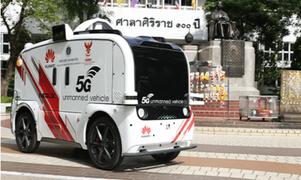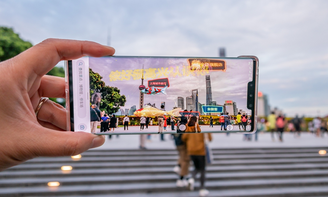1 Introduction
The 5th Generation of mobile networks is on the horizon and promises to deliver a connectivity that will take on a much larger role than previous generation technologies such as 3G and 4G LTE. It is a technology with unique capabilities that will not only interconnect people, but also interconnect and control machines, objects, and devices that will significantly transforms industries and business enabling new services, empower new user experiences, and connect new industries.
5G is much superior from previous technologies in multiple aspects which includes superfast broadband, ultra-reliable low latency communication, massive machine-type communications, high reliability/availability and efficient energy usage.
By the first quarter of 2022, more than 80 countries and regions have commercially launched 5G services, with 2 million base stations and been serving 700 million subscribers. And this year our neighbors in Asia Pacific too has being very dynamic in 5G where countries like China, South Korea, Thailand, Philippines, Indonesia, Singapore, Maldives, and Bangladesh are deploying 5G in the whole country or top cities and countries like India getting ready for 5G with spectrum auctions. Sri Lanka too has conducted few 5G trials and pilot networks are in operation.
2 5G and Industry Digital Transformation possibilities in Sri Lanka
5G can bring enormous capabilities multiple industries that will help to expedite the digital transformation in such industries. In Sri Lankan context some of the sectors that can adopt 5G in early stages includes Agriculture, Manufacturing, Tourism, Ports, Heath and Retail. With real-time data delivered via 5G, farmers can monitor, track, and automate their systems to optimize results. In an environment where manual labour is which is becoming key challenge, Tea, Rubber and paddy cultivations can benefit from such technologies and reduce the dependency on manual labour. Leading players in apparel sector in Sri Lanka is exploring the options of automation and building more efficient production lines. 5G makes it possible to build “smart factories” that can draw on the power of connectivity to achieve greater safety, efficiency, and automation. “Through Internet of Things (IoT) networks of sensors on the factory floor and through the supply chain, operators can be made aware of problems not in a linear fashion, but through the real-time collection and analysis of data ranging from machine performance, staff activity, and logistics.
With higher data rates and latencies AR and VR technologies can be used to provide access to tourism attraction for Realtime live experience remotely for potential tourists prior to traveling. This can help to promote tourism in the country. Telemedicine could really take off without the latency problem not just for diagnosis of remote patients but even for surgery where it can address scarcity of doctors in rural areas. 5G also will help to transform Retail industry. 5G extends the usability of virtual reality (VR) and augmented reality (AR), which could give people the chance to try on things virtually at home or in stores.
Another key area that 5G can help to transform in a country like Sri Lanka is Ports. A perfect example of this is the Ningbo-Zhoushan Port in China. At the port, it’s hard to spot a single human worker. The only sight is automated machinery quickly loading, unloading, and carrying containers back and forth. Port operators in a central control room monitor the safety of gantry cranes, collect real-time data, and perform scheduling remotely using wireless high-definition video backhauled by 5G.
Also, 5G enables two types of communication that are key to improving safety for drivers and pay way for Self driving. Even this is not in very near future in Sri Lankan roads, this is one of key user case of 5G industry is eying on. “Vehicle-to-vehicle (V2V) and vehicle-to-infrastructure (V2I).” One-way V2V can be used in alerting a driver that cars ahead are braking even before the driver can see the brake lights ahead.
3 5G and Sustainable Development
The key functional drivers of 5G will not only transform industries and but also will have a positive impact on countries’ economy as well as will help to achieve most of the UN’s Sustainable Development Goals (SDGs). SDGs objective is to assure everyone everywhere comes into the global economy and substantially improves their quality of life, health and wealth.
According to PWC, direct and indirect impact of 5G will results in US $ 13.2 trillion in global economic value by 2035, generating 22.3 million jobs in the 5G global value chain alone. According to the estimates of the Ministry of Telecommunication and Digital Infrastructure in 2020, developing 5G technology alone could account for 10% of Sri Lanka’s entire GDP by 2025, and generate over at least one million more jobs for years to come, and collectively add US $ 8 billion to US $ 20 billion in economic value by 2030 to Sri Lanka’s GDP.
In a situation financial crisis that erupted recently has shaken the country’s economy to its foundations, it is an opportunity to Sri Lanka, including leaders, policy-makers, industries and people from all income groups engage in a dialogue, to harness full use of technologies in order to create an inclusive economic growth. It is said in a Critical Junctures the disruptive technologies will help economies gain advantages and thrive. There are studies showing that a 20% increase in ICT investments will lead to a 1% increase in GDP growth. In terms of investment efficiency, the ROI of ICT investments is 6.7 times higher than that of non-ICT investments.
4 The Road towards 5G
Compared to previous generations of mobile technologies, 5G carries a number of unique challenges that may delay its availability in emerging markets. It is assumed 5G will take around 15 years in developing markets to cover 80% of the population compared to 10 years for 3G and 8 years for 4G on average that developing countries took to reach 80% of population coverage. Local mobile operators were the pioneers in the region when it comes to 3G and 4G deployments being first to deploy such networks in region. Anyhow when it comes to 5G Sri Lanka is somewhat lagging behind the neighbors.
One of the key concerns of deployment of 5G includes retaining appropriate levels of profitability, due to the high costs of network deployment in low-income environments. Average revenue per user (ARPU) in Sri Lanka remain less than US $ 2.50 compared to advance countries where average revenue per user is around US $ 20. And such ARPU it will be rally difficult for telco operators to recover their investment.
Another key challenge is readiness of the industry and the ecosystem to deploy 5G user cases. Most of the industries has lack of awareness the benefits that 5G can bring to their industries and has very insignificant involvement. If you talk to most of the CIOs they have not considered 5G in their ICT roadmap. Second, to deploy a complete industry specific solution it needs a fairly larger participation from digital ecosystem partners such as Independent Software Vendors (ISVs), Industry Automation, Hardware Solution Providers, Technical Service Providers as well as Knowledge Partners who can help to build the expertise in such industry.
In addition, 5G will be mainly focused on industry sector and value chain will be extended more beyond the telecom operators. This means the portion of benefits that can be absorbed by telecom sector will be much less compared to previous generations of Mobile networks. This too will make 5G business case less attractive to telecom operators.
Regulatory frameworks too will be another area that will slowdown 5G deployments in in countries like Sri Lanka. Factors such as Shared and Unsilenced Spectrum, Infrastructure sharing as well as new network deployments that include heavy deployment of small cells and 5G edge computing deployments need adjustments to the regulatory frame work. In addition, regulatory framework is not yet ready for broader scope of externalities requires regulations across sectors such as media, telecom, financial services, health, and transportation that will play a larger role when it comes to 5G industry applications beyond just being an end user.
5 Creating an Enabling Environment for 5G
The biggest constraint to 5G deployment is the limited availability of use cases, followed by limited availability of digital infrastructure. Identifying relevant use cases remains key challenge to rolling out 5G in Sri Lanka. As most of the 5G user cases will be industry driven, industry leaders beyond telecom sector has a significant role to play to in this scenario. Creating a dialogue among the industry leaders, telecom operators, regulator and other government agencies will be one of the important step prior to commercialization of 5G services.
Establishment of alliances with such stakeholders and build new public-private partnership focused on using 5G to encourage economic growth across several industry verticals will be on key step towards this process. Such alliance may identify the how the 5G can help them to address their underline business needs, what kind of industry scenarios that shall be focused in the initial stage, how the ecosystem partners can work together to create such industry specific solutions, What role each party has to play in such deployment and conducting pre-commercial proof of concepts.
Such alliances are forming up in the region. The Thailand 5G Alliance was launched at the recent Thailand 5G Summit 2022. Led by Thailand’s Digital Economy Promotion Agency, it brings together representatives from operators AIS and True Corp as well as Chinese vendor Huawei, regulator the National Broadcast Telecommunications Commission, the Federation of Thai Industries, the Office of the Digital Economy and Society Commission, the Thai IoT Association and the Telecommunications Association of Thailand.
In addition, Government policy frame work shall be adjusted to encourage the new business models of 5G. Overall, policy interventions involve stimulating demand through supporting use cases, lowering the cost of network deployment through infrastructure-sharing regulations, and improving the regulatory framework, especially on spectrum allocation, to promote effective competition and mitigate risks to private sector investments. Such policy framework shall encourage non-telco participation in the process, make sure interest of telecom operators were not being compromised, and shall consider efficient spectrum allocation for 5G including shared/unlicensed spectrums policy that can be used for industry user cases. Such policies may increase interest of non-telco companies to invest in 5G may create opportunities for telecom operators to share the investment burden with other parties.
Digital innovation is one of key for countries like Sri Lanka to be more competitive and to attracting overseas investment. And 5G will be on of key driver for such innovation in this era. And it is really important that Sri Lanka to not miss the opportunity that is being created by 5G, but same time to make sure the opportunity is optimally utilized with a broader perspective and broader cooperation between the public and private sectors including relevant government agencies to maximize the impact of 5G for economic growth as well as to achieve UN Sustainable Development Goals.
Photo captions



